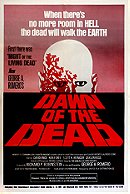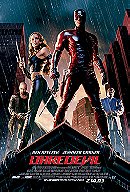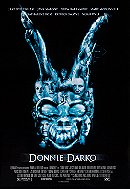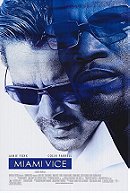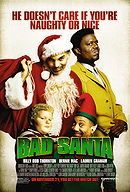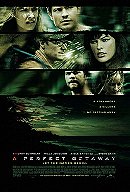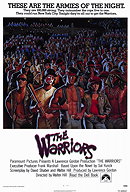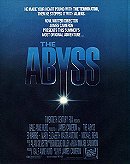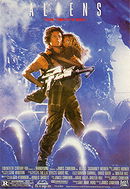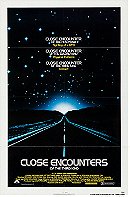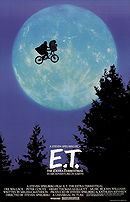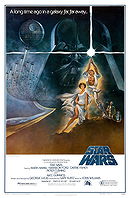Unkindest cut: Movies weakened by directors’ cut
Sort by:
Showing 13 items
Decade:
Rating:
List Type:
Apocalypse Now (1979)
A director’s cut in the letter but not the spirit of the term, Apocalypse Now Redux features nearly an hour’s worth of extra footage reintegrated by Francis Ford Coppola and editor Walter Murch.
But while the Coppola of 2001 presumably had the same genetic profile as the Coppola of 1979, he’s hardly the same filmmaker: If they didn’t share the same name, no one in their right minds would allow the director of Jack to second-guess the man who made The Conversation.
The lengthy dinner at a French plantation, which Murch re-cut the original negative to include, is the best of the restored sequences, but it’s still a collection of heavy-handed monologues dropped into the middle of a film that originally left most of the soliloquizing to Marlon Brando.
Other moments, like Martin Sheen’s cold-blooded killer goofing around on a surfboard swiped from Robert Duvall, do active violence to the movie’s carefully sustained tone, while an encounter with a pair of brainless Playboy bunnies injects some unwanted misogyny. The Redux cut broadens the movie’s scope, but it only makes it bigger, not better.
But while the Coppola of 2001 presumably had the same genetic profile as the Coppola of 1979, he’s hardly the same filmmaker: If they didn’t share the same name, no one in their right minds would allow the director of Jack to second-guess the man who made The Conversation.
The lengthy dinner at a French plantation, which Murch re-cut the original negative to include, is the best of the restored sequences, but it’s still a collection of heavy-handed monologues dropped into the middle of a film that originally left most of the soliloquizing to Marlon Brando.
Other moments, like Martin Sheen’s cold-blooded killer goofing around on a surfboard swiped from Robert Duvall, do active violence to the movie’s carefully sustained tone, while an encounter with a pair of brainless Playboy bunnies injects some unwanted misogyny. The Redux cut broadens the movie’s scope, but it only makes it bigger, not better.
Agent Kermit D. Fonz's rating:


George A. Romero’s Dawn Of The Dead is rightfully hailed as one of the all-time great horror movies, thanks to its deft blend of gruesome setpieces and clever commentary on consumer culture.
Fans have hailed both Dario Argento’s European edit and the U.S. theatrical version as the definitive version of the film, but few, if any, favor the so-called director’s cut, more properly billed as the extended cut, since Romero also edited the domestic theatrical version, and is said to prefer it.
Clocking in at a bloated 139 minutes—versus 126 for the final U.S. version, and a relatively lean 119 minutes for Argento’s edit—the extended cut essentially offers additional exposition that goes nowhere and illuminates little, slowing down the pacing of the film and at times dragging it to a standstill.
While it may be worth a look for diehard fans who simply want more of the greatest zombie movie of them all, it’s definitely a worse film by almost any measure.
Fans have hailed both Dario Argento’s European edit and the U.S. theatrical version as the definitive version of the film, but few, if any, favor the so-called director’s cut, more properly billed as the extended cut, since Romero also edited the domestic theatrical version, and is said to prefer it.
Clocking in at a bloated 139 minutes—versus 126 for the final U.S. version, and a relatively lean 119 minutes for Argento’s edit—the extended cut essentially offers additional exposition that goes nowhere and illuminates little, slowing down the pacing of the film and at times dragging it to a standstill.
While it may be worth a look for diehard fans who simply want more of the greatest zombie movie of them all, it’s definitely a worse film by almost any measure.
Agent Kermit D. Fonz's rating:


Daredevil (2003)
The greatest crime Mark Steven Johnson’s director’s cut of Daredevil commits is adding half an hour to an already tedious film.
The original Daredevil was lousy for a number of reasons, including a horribly miscast Ben Affleck; a fairly miscast Michael Clarke Duncan; Johnson’s inept directorial style, which manages to be simultaneously goofy and dull; and everything else.
Since it would’ve been impossible to fix any one of these problems, let alone all of them, with new footage, the new version sought instead to shift focus from Ben Affleck and Jennifer Garner’s gooey romance and over to questions about the true nature of Daredevil: Is he a hero?
A vigilante? A leather fetishist? In practical terms, this means an entire new subplot about Affleck (as Daredevil’s secret identity, blind lawyer Matthew Murdock) defending Coolio against a murder charge.
While this is less immediately painful than Affleck and Garner mooning over each other, the investigation and court case are only barely connected to the film’s main plot, and the script isn’t sharp or insightful enough to justify the inserted glimpses of the world’s worst Law & Order spin-off.
Affleck remains as hopelessly wrong for the part as ever, only now, he has more time to look ridiculous as a brilliant lawyer-cum-investigator while engaging in some ill-advised uncostumed vigilantism.
Pretensions of philosophy aside, the court case and other minor changes Johnson made to the movie fail to make a turgid mess into anything more coherent; at best, the new cut exists only to serve as proof of the failure of the original release.
It’s hard to imagine anyone watching the theatrical version and thinking, “Yes, more of that, please.”
The original Daredevil was lousy for a number of reasons, including a horribly miscast Ben Affleck; a fairly miscast Michael Clarke Duncan; Johnson’s inept directorial style, which manages to be simultaneously goofy and dull; and everything else.
Since it would’ve been impossible to fix any one of these problems, let alone all of them, with new footage, the new version sought instead to shift focus from Ben Affleck and Jennifer Garner’s gooey romance and over to questions about the true nature of Daredevil: Is he a hero?
A vigilante? A leather fetishist? In practical terms, this means an entire new subplot about Affleck (as Daredevil’s secret identity, blind lawyer Matthew Murdock) defending Coolio against a murder charge.
While this is less immediately painful than Affleck and Garner mooning over each other, the investigation and court case are only barely connected to the film’s main plot, and the script isn’t sharp or insightful enough to justify the inserted glimpses of the world’s worst Law & Order spin-off.
Affleck remains as hopelessly wrong for the part as ever, only now, he has more time to look ridiculous as a brilliant lawyer-cum-investigator while engaging in some ill-advised uncostumed vigilantism.
Pretensions of philosophy aside, the court case and other minor changes Johnson made to the movie fail to make a turgid mess into anything more coherent; at best, the new cut exists only to serve as proof of the failure of the original release.
It’s hard to imagine anyone watching the theatrical version and thinking, “Yes, more of that, please.”
Agent Kermit D. Fonz's rating:


Donnie Darko (2001)
Richard Kelly’s striking debut feature barely got a release in fall 2001, but the elliptical, dark suburban fantasy about fate, time travel, and terrifying rabbits quickly earned a cult following. That second wind earned Kelly a chance to rerelease a new cut of a film he felt pressured to finish the first time around, but the results suggested that the corners-cut version was the right way to go. Incorporating deleted scenes, some of which made it onto the first DVD version of the film, the new cut is easier to follow, but as a consequence, it’s less alluring.
Sometimes you’re better off not being able to connect the dots. Also, old fans hooked by the film’s opening-scene use of Echo And The Bunnymen’s “The Killing Moon,” which perfectly established the film’s doomy feel and ’80s setting, were taken aback by the restoration of Kelly’s original choice for the opening: INXS’ “Never Tears Us Apart.” Great song? Sure. The right song? Nope.
Sometimes you’re better off not being able to connect the dots. Also, old fans hooked by the film’s opening-scene use of Echo And The Bunnymen’s “The Killing Moon,” which perfectly established the film’s doomy feel and ’80s setting, were taken aback by the restoration of Kelly’s original choice for the opening: INXS’ “Never Tears Us Apart.” Great song? Sure. The right song? Nope.
Agent Kermit D. Fonz's rating:


Miami Vice (2006)
The flaw in Michael Mann’s director’s cut of the flawed-but-fascinating Miami Vice is apparent right from the very beginning. The theatrical release dumps viewers into the middle of a scene, with no exposition and barely audible dialogue, as Crockett and Tubbs (Colin Farrell and Jamie Foxx) navigate a noisy club.
It’s jarring, but in a film where the sensory experience is more crucial than plot specifics, it’s the perfect way to begin.
The director’s cut opens with a boat race that lays the groundwork for some future story stuff, but it’s hardly essential, and lacks the punch of the theatrical edition. Aside from that, the changes are relatively minor: a few scenes are extended, some characters get a little more shading, and none of it feels necessary.
But there’s one other crucial error: using Nonpoint’s horrendous metal cover of “In The Air Tonight” for the climactic action sequence and the final credits. It’s a major distraction for the big showdown, and seems to exist mostly to link the movie to the TV show (which used the original version to great effect in its pilot episode), an error the rest of the film happily avoids.
It’s jarring, but in a film where the sensory experience is more crucial than plot specifics, it’s the perfect way to begin.
The director’s cut opens with a boat race that lays the groundwork for some future story stuff, but it’s hardly essential, and lacks the punch of the theatrical edition. Aside from that, the changes are relatively minor: a few scenes are extended, some characters get a little more shading, and none of it feels necessary.
But there’s one other crucial error: using Nonpoint’s horrendous metal cover of “In The Air Tonight” for the climactic action sequence and the final credits. It’s a major distraction for the big showdown, and seems to exist mostly to link the movie to the TV show (which used the original version to great effect in its pilot episode), an error the rest of the film happily avoids.
Agent Kermit D. Fonz's rating:


Bad Santa (2003)
While Terry Zwigoff’s cheerless Christmas flick Bad Santa was damn-near perfect in its theatrical form, there are certainly a lot of different cuts. First, there’s the Badder Santa cut (raunchier, as if the film needed that) and Zwigoff’s own Director’s Cut, which runs three minutes shorter than the theatrical.
The main difference is Zwigoff’s removal of Billy Bob Thornton’s opening voiceover, where his drunken mall-Santa works through a list of “shitty situations” he’s suffered in his life, ramping up the comedy while playing down the desperation. Zwigoff also nixes the scene of Thornton teaching the near-mute, socially inept kid played by Brett Kelly how to box.
Zwigoff can practically be heard in the background pleading with his producers, “It’s not a comedy!” Essentially, Zwigoff’s cut is “darker,” but unnecessarily so. Bad Santa works because of the undercurrents of nihilism and tragedy beneath its bad-mannered comedy façade. Bringing these elements to the surface only make the film seem less subversive.
The main difference is Zwigoff’s removal of Billy Bob Thornton’s opening voiceover, where his drunken mall-Santa works through a list of “shitty situations” he’s suffered in his life, ramping up the comedy while playing down the desperation. Zwigoff also nixes the scene of Thornton teaching the near-mute, socially inept kid played by Brett Kelly how to box.
Zwigoff can practically be heard in the background pleading with his producers, “It’s not a comedy!” Essentially, Zwigoff’s cut is “darker,” but unnecessarily so. Bad Santa works because of the undercurrents of nihilism and tragedy beneath its bad-mannered comedy façade. Bringing these elements to the surface only make the film seem less subversive.
Agent Kermit D. Fonz's rating:


David Twohy’s taut, twisty thriller A Perfect Getaway is one of its decade’s most effective thrillers. Landing in theatres around the same time as ostensibly similar tourists-in-peril pictures like The Ruins and Turistas, the film was largely, and regrettably, shrugged off by critics and audiences.
For its home-video release, Twohy prepped a slightly longer cut that seemed intended to bait fans of “extreme” cinema, slapping the case prominently with the words “UNRATED DIRECTOR’S CUT.” The changes are few, but noticeable, with Twohy adding a speed-ramped scene of topless women sun-worshipping on a secluded beach, and overextended the flashback sequence that sets the tone for the film’s nifty third-act twist.
A Perfect Getaway works because it’s tight, efficient, and masterfully constructed. Twohy’s added footage only serves to bog down the crackerjack pacing, while adding a few breasts, pandering to the kinds of people who rent “Unrated Director’s Cut” discs because they think that translates into “more boobs.”
For its home-video release, Twohy prepped a slightly longer cut that seemed intended to bait fans of “extreme” cinema, slapping the case prominently with the words “UNRATED DIRECTOR’S CUT.” The changes are few, but noticeable, with Twohy adding a speed-ramped scene of topless women sun-worshipping on a secluded beach, and overextended the flashback sequence that sets the tone for the film’s nifty third-act twist.
A Perfect Getaway works because it’s tight, efficient, and masterfully constructed. Twohy’s added footage only serves to bog down the crackerjack pacing, while adding a few breasts, pandering to the kinds of people who rent “Unrated Director’s Cut” discs because they think that translates into “more boobs.”
Agent Kermit D. Fonz's rating:


Sometimes, bad or unnecessary director’s cuts result from films being victims of their own success. Had Rock Star Games, the innovative, controversial creators of the Grand Theft Auto series, not decided to give Walter Hill’s 1979 cult classic The Warriors the GTA treatment, there would have been no call for an “Ultimate Director’s Cut.”
But as a tie-in to the videogame release, Hill acquiesced to tinker with his comic-book vision of New York City gangs by making the “comic-book” part unnecessarily explicit.
This 2007 DVD-only edition features animated segues that color over footage, and sets them within a cutesy graphic context that disrupts the pacing and insults the audience by underlining the film’s cartoonish hyperbole—as if people would otherwise mistake a gang in baseball gear and clown makeup for docu-realism.
But as a tie-in to the videogame release, Hill acquiesced to tinker with his comic-book vision of New York City gangs by making the “comic-book” part unnecessarily explicit.
This 2007 DVD-only edition features animated segues that color over footage, and sets them within a cutesy graphic context that disrupts the pacing and insults the audience by underlining the film’s cartoonish hyperbole—as if people would otherwise mistake a gang in baseball gear and clown makeup for docu-realism.
Agent Kermit D. Fonz's rating:


The Abyss (1989)
James Cameron is a classic tinkerer: Three of his films (Aliens, The Abyss, and T2) exist in significantly different cuts, and a fourth, Titanic, was recently converted to 3-D for quick cash-in purposes. In no case is the non-theatrical version superior to the original cut, but The Abyss comes the closest, because at least an argument could be made for the essentiality of the excised footage. Cameron removed one huge special effect from the film: a super-mega-ultra tidal wave large enough to wipe out any landmark-filled metropolis with a coastline.
Getting to that shot in the director’s cut, however, involves sitting through a 10-minute anti-Cold War lecture first, as the aliens known as NTIs (“non-terrestrial intelligence”) build a little room for Ed Harris at the bottom of the sea, treat him to news footage of humanity’s various evils, and show him what will happen to humanity, giant-wave-wise, if it doesn’t wise up.
The whole abandoned subplot feels as important to Cameron as the environmental speech that ends On Deadly Ground must have felt important to Steven Seagal. Unlike the latter, the former rightly hit the cutting-room floor.
Getting to that shot in the director’s cut, however, involves sitting through a 10-minute anti-Cold War lecture first, as the aliens known as NTIs (“non-terrestrial intelligence”) build a little room for Ed Harris at the bottom of the sea, treat him to news footage of humanity’s various evils, and show him what will happen to humanity, giant-wave-wise, if it doesn’t wise up.
The whole abandoned subplot feels as important to Cameron as the environmental speech that ends On Deadly Ground must have felt important to Steven Seagal. Unlike the latter, the former rightly hit the cutting-room floor.
Agent Kermit D. Fonz's rating:


Aliens (1986)
The theatrical cut of James Cameron’s Aliens begins with the unlikely discovery of Ripley (Sigourney Weaver) in deep space, where she’d been drifting along in hyper-sleep in the many years since her old mining ship, the Nostromo, was lost to an alien invasion.
To her horror, Ripley learns that LV426, the planet where her crew discovered the creature, has not only since been colonized, but that all communication to the settlers has been mysteriously lost.
So when she and a group of heavily armed Marines travel back to the planet and cross its surface to the colony in howling wind, there’s the dread of the unknown: What will they find? Will there be any survivors?
But all that dread—and, just as importantly, the advantages of revealing the situation through Ripley’s point of view—goes out the window in Cameron’s director’s cut, which makes the unfathomable decision to show a piece of life (and death) among the settlers, perhaps to further humanize the scraggly girl Ripley later finds in the tunnels.
Other changes include more footage of the aliens’ life cycle and the establishment of automated machine guns, but those are merely superfluous, not outright destructive.
To her horror, Ripley learns that LV426, the planet where her crew discovered the creature, has not only since been colonized, but that all communication to the settlers has been mysteriously lost.
So when she and a group of heavily armed Marines travel back to the planet and cross its surface to the colony in howling wind, there’s the dread of the unknown: What will they find? Will there be any survivors?
But all that dread—and, just as importantly, the advantages of revealing the situation through Ripley’s point of view—goes out the window in Cameron’s director’s cut, which makes the unfathomable decision to show a piece of life (and death) among the settlers, perhaps to further humanize the scraggly girl Ripley later finds in the tunnels.
Other changes include more footage of the aliens’ life cycle and the establishment of automated machine guns, but those are merely superfluous, not outright destructive.
Agent Kermit D. Fonz's rating:


“I never should have shown the inside of the mother ship,” Steven Spielberg lamented about the “Special Edition” of Close Encounters Of The Third Kind, which makes this the rare case of a director regretting his own recut. And for good reason: Having Richard Dreyfuss actually see the aliens he and others had contacted obliquely ruins the hushed mystery of the titular encounters.
The thrill of Close Encounters’ climactic standoff between human scientists and the mothership lies in the way these very different creatures work to communicate peacefully with each other. According to Spielberg, going inside the ship was a concession to the studio, which needed a big advertising hook to justify the money allotted to him for a “finished” cut of the film.
In spite of the addition of this new footage, the 1980 special edition is actually three minutes shorter than the theatrical cut, due to Spielberg’s judicious editing. Take away the mothership business, and the “Special Edition” is the subtler, better paced of the two cuts, but all most people really remember about it is the stuff Spielberg would rather they forget.
The thrill of Close Encounters’ climactic standoff between human scientists and the mothership lies in the way these very different creatures work to communicate peacefully with each other. According to Spielberg, going inside the ship was a concession to the studio, which needed a big advertising hook to justify the money allotted to him for a “finished” cut of the film.
In spite of the addition of this new footage, the 1980 special edition is actually three minutes shorter than the theatrical cut, due to Spielberg’s judicious editing. Take away the mothership business, and the “Special Edition” is the subtler, better paced of the two cuts, but all most people really remember about it is the stuff Spielberg would rather they forget.
Agent Kermit D. Fonz's rating:


Spielberg has similarly expressed regret over his 20th-anniversary director’s cut of E.T.: The Extra-Terrestrial, which infamously used digital trickery to take the guns out of government agents’ hands, and replace them with walkie-talkies.
At the time, he felt it was inappropriate to have authority figures handling guns around children; in retrospect, he’s said the whole idea was erring ridiculously on the side of political correctness.
But he’s said much less about regretting the many other changes to that cut, including a bunch of CGI overlays that give the E.T. puppet more exaggerated, goofy facial expressions, the silly new scene where E.T. and his buddy Elliott (Henry Thomas) goof around in the bathroom together, or the digitally altered sequences that make E.T.’s ship more dark and dramatic, and less charming.
Essentially, the 20th-anniversary cut tried to catch a classic up to what was then current technology, and in the process, just made it look instantly dated. It also turned Spielberg into a poster-child example of directors who can’t stop interfering with their own past work, and second-guessing their old insticts. Speaking of which…
At the time, he felt it was inappropriate to have authority figures handling guns around children; in retrospect, he’s said the whole idea was erring ridiculously on the side of political correctness.
But he’s said much less about regretting the many other changes to that cut, including a bunch of CGI overlays that give the E.T. puppet more exaggerated, goofy facial expressions, the silly new scene where E.T. and his buddy Elliott (Henry Thomas) goof around in the bathroom together, or the digitally altered sequences that make E.T.’s ship more dark and dramatic, and less charming.
Essentially, the 20th-anniversary cut tried to catch a classic up to what was then current technology, and in the process, just made it look instantly dated. It also turned Spielberg into a poster-child example of directors who can’t stop interfering with their own past work, and second-guessing their old insticts. Speaking of which…
Agent Kermit D. Fonz's rating:


When George Lucas spent millions of dollars retouching the Star Wars trilogy for “Special Edition” theatrical (and home video) releases in 1997, it was a big deal. Across A New Hope, The Empire Strikes Back, and Return Of the Jedi, a lot of the changes were negligible—special effects and matte backgrounds were touched up, and more aliens were added to crowd scenes in an effort to further flesh out what by that point had become “the Star Wars universe.”
Other changes, however, set fans into a lather, drawing the People Vs. George Lucas battle-lines that have come to demarcate contemporary Star Wars fandom. A scene of Harrison Ford preemptively shooting bounty hunter Greedo in the first film was revised to have Ford countering an attack, essentially re-characterizing Han Solo’s bad-boy pirate persona and making “Han Shot First” a fanboy rallying cry.
Even before the Star Wars prequels made George Lucas seem like a monster intent on devouring the memories and dreams of his target audience, the 1997 Star Wars Special Editions already had people questioning who really owns these films: the creator or the fans.
Other changes, however, set fans into a lather, drawing the People Vs. George Lucas battle-lines that have come to demarcate contemporary Star Wars fandom. A scene of Harrison Ford preemptively shooting bounty hunter Greedo in the first film was revised to have Ford countering an attack, essentially re-characterizing Han Solo’s bad-boy pirate persona and making “Han Shot First” a fanboy rallying cry.
Even before the Star Wars prequels made George Lucas seem like a monster intent on devouring the memories and dreams of his target audience, the 1997 Star Wars Special Editions already had people questioning who really owns these films: the creator or the fans.
Agent Kermit D. Fonz's rating:


Check out the site, where it comes from, www.avclub.com/articles/the-unkindest-cut-13plus-movies-weakened-by-direct,79676/
 Login
Login
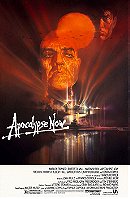
 3930
3930
 8.2
8.2
 8.4
8.4
